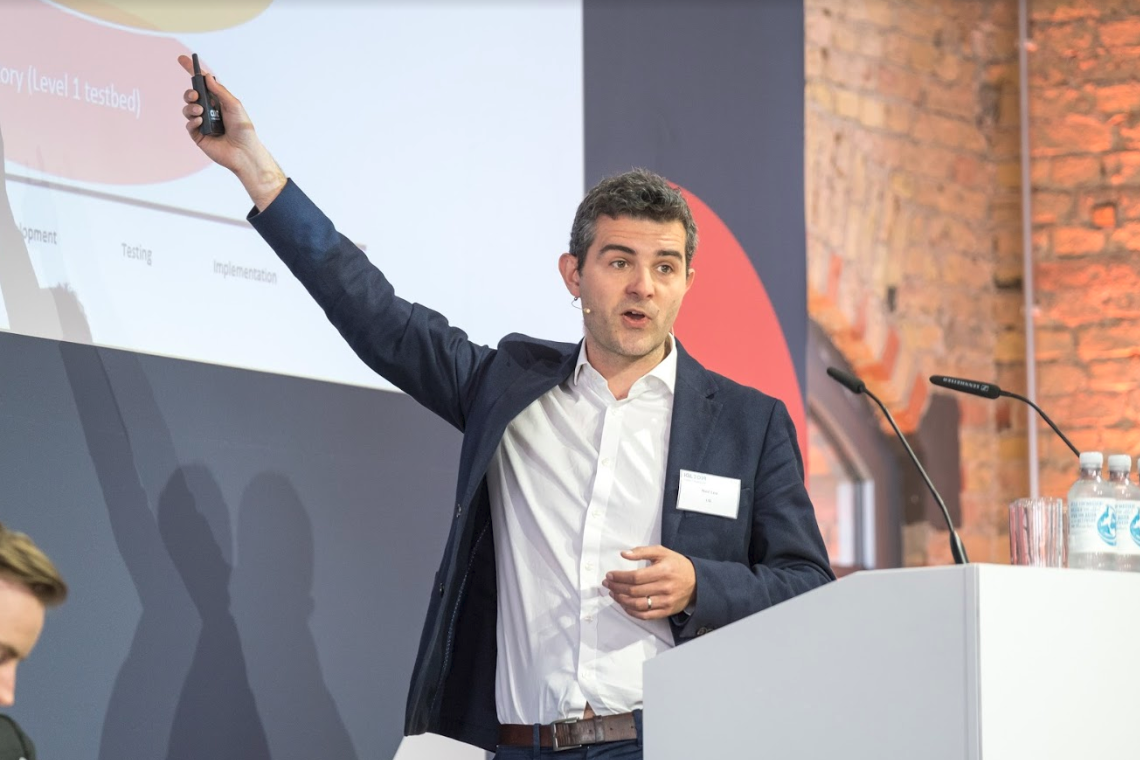
Blog
How to test innovation in the real world: insights from IGL2019
Jen Rae and Harry Armstrong
7 June 2019
The emergence of new technological capabilities, whether in the form of Artificial Intelligence enabled autonomous vehicles or new ways of delivering services, offer important benefits for the economy and society. But their novelty can pose a problem. How will these innovations function in the real world? How can we employ these new ideas to maximize the benefits and mitigate potential harms? What other structures, physical, organisational or social, will we need to put in place for them to work?
Experimentation – testing the ideas out in the real world – is the only way to effectively explore these questions.
Experimentation – testing the ideas out in the real world – is the only way to effectively explore these questions. Only in a real world setting will certain benefits or problems become clear. It is no surprise then that testbeds, referred to as a sandbox or living lab by some, has seen renewed interest in recent years. Technology companies, governments and even regulators are developing testbed-like initiatives to resolve a broad range of issues, but at their heart is the desire to speed up potentially valuable innovation.
During one of the workshops as part of Nesta’s Innovation Growth Lab’s global conference IGL2019 in Berlin, we explored how new ‘methods’ in innovation policy are allowing policymakers to experiment and test out how technologies interact with the real world, exploring the opportunities they could bring whilst helping to anticipate the impacts. There were a few key takeaways from the presentations and discussion:
- Terminology – is it a testbed, sandbox, demonstrator or living lab? – does matter, of course. But it’s not as important as identifying a clear purpose for intervention. Forthcoming Nesta research looking at ‘real world’ innovation testbeds (presented at the session by Dr Neil Lee, LSE, and Siri Arntzen, Arup) explores a variety of policy uses for these testbeds beyond simply testing and verifying new technologies such as capturing competitive advantage, inward investment, cluster development, improving public services and engaging with regulatory frameworks.
- The use of regulatory testbeds and sandboxes have greatly expanded over the last couple of years but little analysis has been done to understand their value and what best practice looks like beyond the fintech space. Over the past few years Nesta has been exploring the concept of ‘anticipatory regulation’, where regulators can experiment with these methods to become better equipped to engage with innovation and technology. Our forthcoming research with the UK Government’s Better Regulation Executive highlights the benefit, limitations and the pitfalls of these approaches. Understanding regulatory experimentation will only become more important as it becomes a key tool in the regulatory toolbox.
- Recognising the opportunities these new methods offer, countries are increasingly taking a nationally coordinated approach that include subnational experimentation. For example we heard from Kai Heischner from the German Federal Ministry for Economic Affairs and Energy who explained the German Government’s efforts to connect regulatory testbeds across Germany. And in Sweden, pioneers of testbed development, the government now has a national testbeds strategy, ‘Testbed Sweden’, to provide a common framework for working together
- Evaluation: one important element that is generally missing from most initiatives is robust evaluation, embedded from the initial planning stages. As a result it is often difficult to work out how successful a particular project has been or whether it has achieved its aims. Addressing this lack of evidence is one of the core aims of Nesta’s Innovation Growth Lab and we will be exploring how these methods could be evaluated better in the future.
The workshop provided a taster of some of the research Nesta is publishing in the coming months which explores these concepts further. We’ll also be publishing practical advice on how to design real world innovation testbeds to help policymakers understand and make better use of these important tools. If you would like to find out more, please do get in touch with us at:
